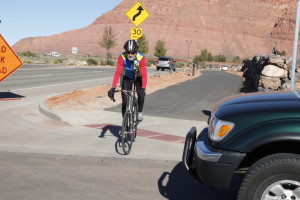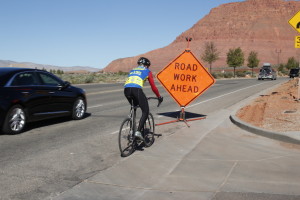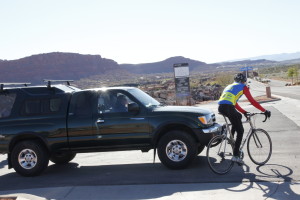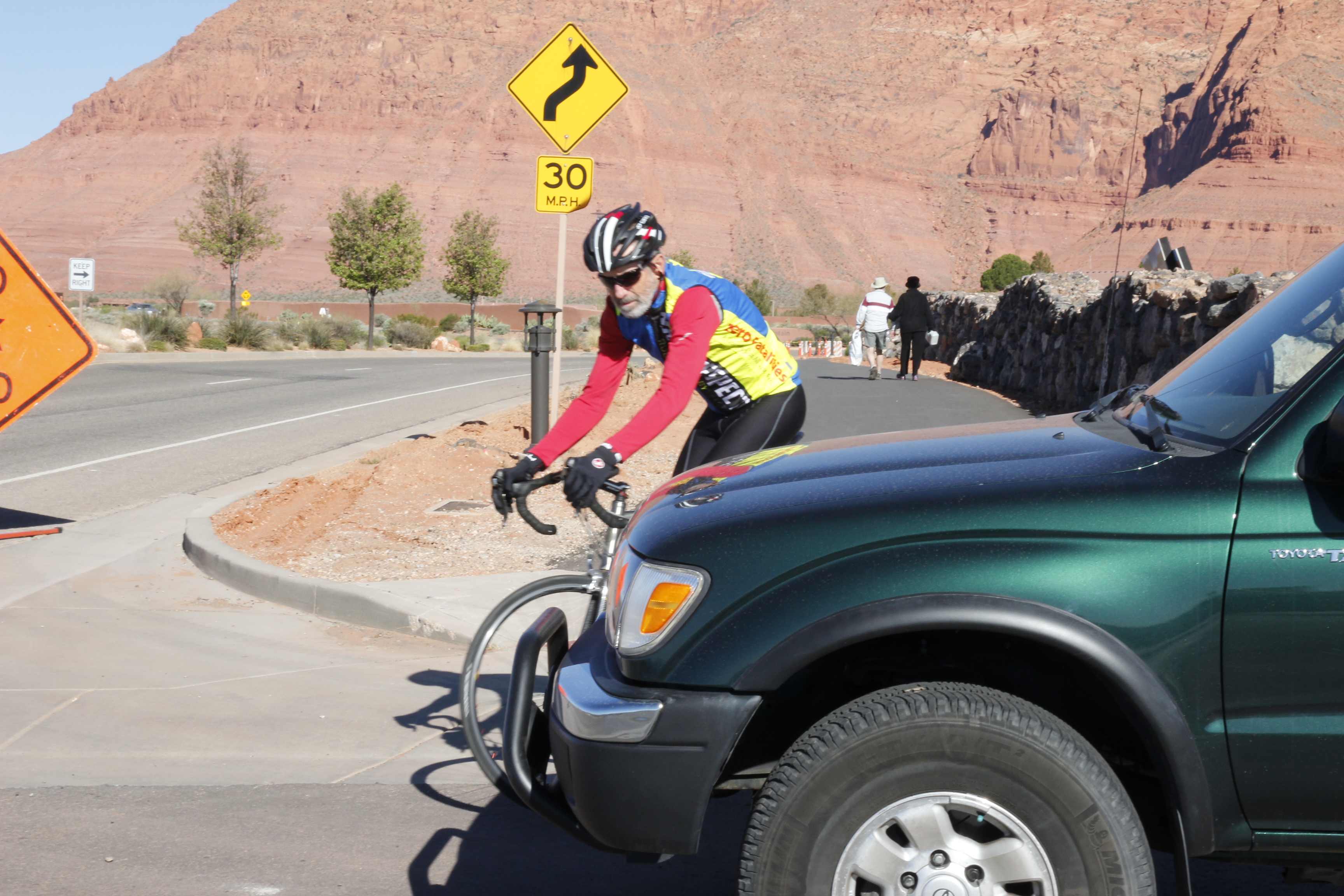
FEATURE – When I was 8, I was speeding along a sidewalk on my little purple Schwinn, paying no attention to my surroundings as all I could think about was getting to Little Cliff’s Bakery. Then I slammed into the side of a vehicle pulling out of a parking lot. I was OK, the driver quite startled and her car a little scratched. I’m sure I didn’t taste the apple fritter – still gulping in lots of air, in shock. That was a hard-knocks way to learn a “Road Respect” lesson.

One proactive force that is busy spreading the statewide Road Respect message is the St. George Police Department’s Mountain Bike Patrol.
To find out about its operation, I recently visited with the patrol’s supervisor, Sgt. Curtis Spragg. I asked him about what some of the common concerns are between motorists and cyclists. He boiled it down to two: 1) cyclists aren’t visible or predictable to motorists in their movement patterns; and 2) motorists sometimes need to exercise more patience with cyclists when seeking to pass.
The Mountain Bike Patrol, which has six full-time police officers and several seasonals, is in an excellent position to outreach these messages. What better spokespeople for safety between motorists and cyclists than those actually out on their own bikes? The officers both demonstrate and educate in a personable way, leaving the stress-inducing police car behind.

“The bikes are a great PR thing,” Spragg said. “It’s amazing how open people are to talking to me on a bike. The car is like a barrier.”
This is not to say the bike patrollers aren’t fully outfitted. I could already tell from looking at Spragg that he had a bullet-proof vest on under his uniform. The officers have full-suspension bikes plus an additional 30 pounds of gear including their firearm, radio, baton, TASER and handcuffs. The bikes even have lights and sirens.
One big difference between the bike patrol and other officers, said a grinning Spragg: “We get to wear shorts in the summertime.”
Another difference is the bike patrol’s stealth capability, described by Spragg as being able “to access areas more easily and get into nooks and crannies of town that may be overlooked by patrol vehicles.”
Parks, multiuse paths and neighborhoods and housing complexes with known issues – these are the places where the bike patrol thrives, providing a more interactive presence and spending extra time where needed.
While one might have a romantic view of the bike patrol speeding after a fleeing suspect or taking a dramatic jump over an obstacle, the opposite is true. Officers practice skills that stress balance. They ride a slow-cone course, stairs and mountain bike trails to gain proficiency in riding safely and with confidence. Taking chase doesn’t come into play since “no one can outrun the radio.”

The bike patrol rides the entirety of St. George’s multiuse paths over a period of time, so if you are out on the Halfway Wash, Red Hills Parkway, Highway 18, Mall Drive, Riverside Drive, Virgin River, Middleton and other trails, you very possibly will see them out as well.
Revisiting Spragg’s messages to cyclists and motorists, they relate to some specific scenarios we can all consider and prepare for:
- Cyclists should make eye contact with motorists when crossing driveways and side streets via a multiuse path or sidewalk (I need no convincing on this one) – cyclists riding on roadways against traffic (which is not legal) are very difficult for motorists to anticipate or see.
- Cyclists should think about how visible they are or are not; if a cyclist can’t be seen by a motorist, that’s a dangerous accident waiting to happen. Bikes are required to have proper lighting when traveling at night.
- Cyclists’ use of proper hand signals is vital in communicating their intentions to motorists, alleviating any anxiety for the motorist about what a cyclist will do.
- Motorists should be patient when trying to pass a cyclist, waiting for when it’s safe to pass with a distance of at least 3 feet (the law). It is legal for a motorist to cross the center line to pass a cyclist if it is safe to do so.
“There is no reason to not give more than 3 feet if it’s safe,” Spragg said.
This allows room for the cyclist that may encounter debris and need to move into the roadway.

These all add up to a big Road Respect mantra: Predictability and patience equal safer roads.
Resources
St. George News Road Respect column is developed with the Southern Utah Bicycle Alliance, a nonprofit advocacy organization devoted to making cycling safe and convenient for everyone who rides a bike. Opinions stated are those of the columnist and may not be representative of St. George News.

Email: [email protected]
Twitter: @STGnews
Copyright St. George News, SaintGeorgeUtah.com LLC, 2016, all rights reserved.